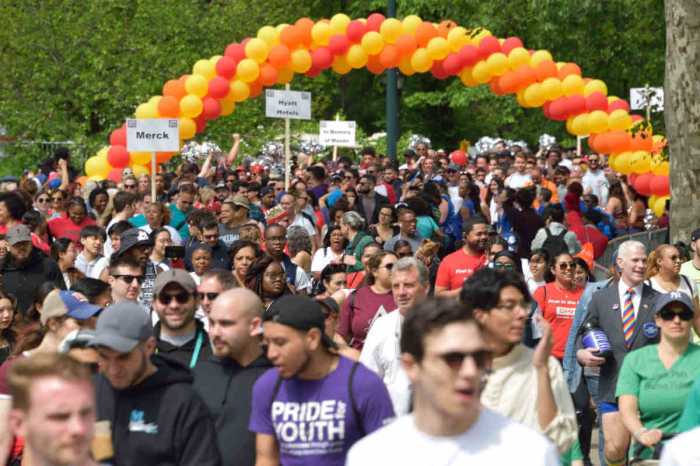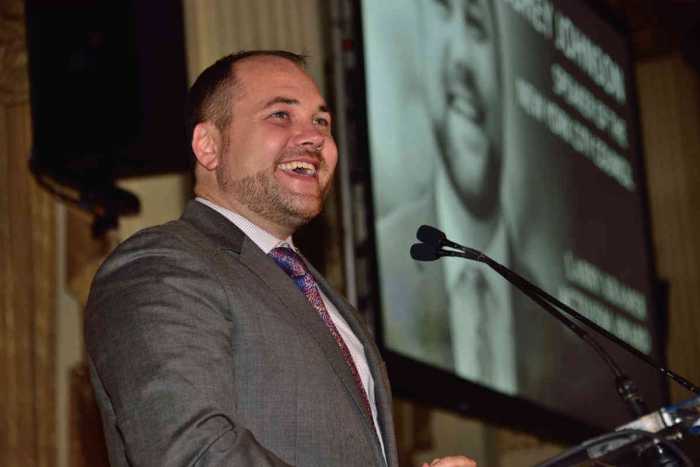The Plan to End AIDS continues to confront money problems as Governor Andrew Cuomo’s proposed budget for the state’s 2017 fiscal year will spend only $40 million on the plan, an amount that is well below the more than $100 million that advocates had hoped the state would spend in the current fiscal year.
On November 30, a day prior to World AIDS Day, Cuomo announced that the state would add another $200 million to the roughly $2.5 billion it spends every year on AIDS. Most of that larger amount is for care for people who are already HIV-positive. While Cuomo “administration sources” were paraphrased in the Daily News saying the $200 million “would represent an 8 percent increase over the $2.5 billion the state already spends annually on such programs,” they did not detail how that cash would be spent.
During his January 13 State of the State speech, Cuomo did not mention the plan, which seeks to reduce the number of new HIV infections in New York from the current 3,000 a year to 750 annually by 2020, but the state budget documents released on that day showed that the $200 million will be spent over five years at $40 million a year. AIDS advocates and others expected that the entire $200 million would be spent in the 2017 state fiscal year, which begins on April 1.
Cuomo stiffs Plan to End AIDS in 2017 state budget
In a January 13 ad that ran in the Albany Times Union, Housing Works, an AIDS group, wrote, “It is essential that the Governor's commitment of $200 million per year… be included in the final budget approved by the Legislature.”
Charles King, the chief executive of Housing Works, co-chaired the task force that wrote the plan with Guthrie Birkhead, a deputy commissioner in the state health department. King conceived of the plan with Mark Harrington, executive director of the Treatment Action Group, an advocacy organization.
In a December 2 editorial, the New York Times wrote that Cuomo “announced a big increase this week in the amount of money New York will spend annually to fight the disease.”
Kelsey Louie, GMHC’s chief executive, told The Guardian at a World AIDS Day event that “This new $200 million in funding… will go to life-saving programs, from housing to treatment and prevention, to access to PrEP, which can prevent new infections. New York is well on its way to our collective goal of ending the epidemic by 2020.”
The state money for the plan has been a persistent problem. Cuomo first endorsed the plan in June 2014 when he announced successful negotiations with drug companies to buy the anti-HIV drugs that are a core component of the plan at reduced prices. The task force, which Cuomo appointed, completed the plan in late 2014 and hoped for a significant infusion of state dollars in the current state fiscal year’s budget.
On a February 2015 appearance on “Capital Tonight,” a program on Albany’s cable news channel, King said that $104 million for the plan in the state budget would be a “dream number” though that amount assumed that other funding sources were in place. Cuomo spent just $10 million on the plan in the 2016 state budget. In a January 14 email, King wrote that the $10 million “has all been obligated not spent.” That amount consists of $2.5 million from the state’s general fund and $7.5 million in savings from Medicaid, the health insurance plan for the poor that is jointly funded by state and federal governments.
New York City has committed to one big-ticket item that is a central element of the plan — HASA for All. This city legislation would extend services, such as rental assistance, food stamps, and Medicaid, at the city’s HIV/AIDS Services Administration (HASA) to people who are HIV-positive but have not received an AIDS diagnosis.
HASA currently serves only people who have such a diagnosis, which is increasingly uncommon as powerful anti-HIV drugs have kept HIV-positive people from progressing to AIDS. Part of the plan envisions identifying many more HIV-positive people and treating them with anti-HIV drugs to the point that they are no longer infectious. Stable housing, good nutrition, and health insurance make it easier for HIV-positive people to stay on their anti-HIV drugs so getting HASA services to poorer HIV-positive clients would reduce new HIV infections.
The city and state both fund the HASA budget and they are negotiating the contributions that both would make to the estimated 4,000 to 6,000 HIV-positive people who could qualify for HASA if the legislation is enacted. Adding the new HASA clients is expected to cost $100 million per year. The city will not enact HASA for All without additional state support.
“We are still analyzing the budget,” Mayor Bill de Blasio said on January 18, referring to the state budget. “There are still some areas where we need real answers from the governor’s team so I’m not ready to comment on that yet. We are quite clear about our commitment to end the epidemic and the investments we will make… We will make substantial investments, but we need to see a fair response from the state and we also have to recognize that there are some areas that historically have been the state’s responsibility.”
In the meantime, advocates are pressing Albany to make the $40 million become the $200 million they were expecting.
“I hope that the governor and his staff will reconsider the allocation to support the Plan to End AIDS,” said Regina Quattrocchi, the chief executive at Bailey House, an AIDS housing group. “We know that it saves cost in the long run in addition to saving people’s lives.”



































